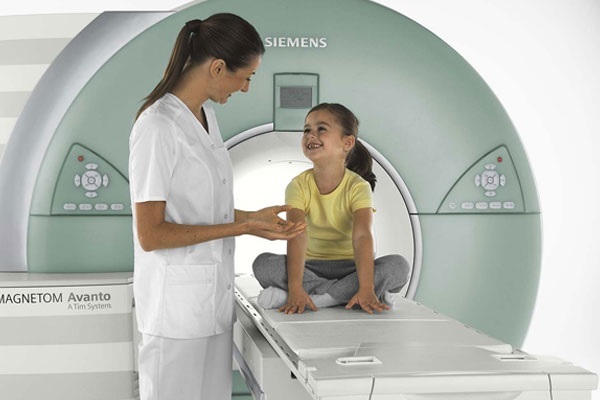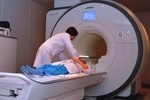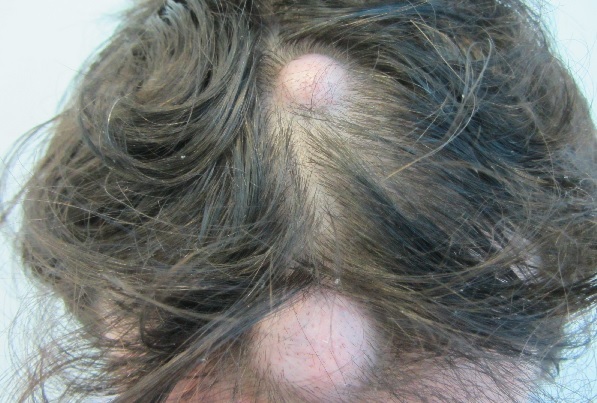Myths about the dangers of MRI of the brain
Contents:
- MRI: Briefly on the Physical Basics of
- MRI: Health Effects
- Is it Harmful to Do MRI of the Brain, Neck, and Spine?
- Summing up the
 MRI as a method of diagnosing diseases( see What diseases reveals MRI) is widely used in medical, public and private institutions. Often, doctors( clinicians) place a magnetic resonance study above the physical examination of the patient, laboratory data, giving him( the study) a priority in diagnosing. In the growth of the number of MR studies, the role of an increase in the number of tomographs plays a role. So, if 10 years ago MRIs were only in federal centers and large cities, now regional centers and even peripheral clinics can boast of modern equipment. This fact both pleases and alarms, because the appointment of MP-research is poorly controlled. Is MRI harmful for health?
MRI as a method of diagnosing diseases( see What diseases reveals MRI) is widely used in medical, public and private institutions. Often, doctors( clinicians) place a magnetic resonance study above the physical examination of the patient, laboratory data, giving him( the study) a priority in diagnosing. In the growth of the number of MR studies, the role of an increase in the number of tomographs plays a role. So, if 10 years ago MRIs were only in federal centers and large cities, now regional centers and even peripheral clinics can boast of modern equipment. This fact both pleases and alarms, because the appointment of MP-research is poorly controlled. Is MRI harmful for health?
MRI: briefly on the physical basis of
The basis of MRI is the study of the proton composition of the body. So, the human body is hydrated, water is the overwhelming part of its mass. Water molecules are not "in themselves" in the body, but in the form of ions( a positively charged proton, a negatively charged hydroxyl ion).
Water and protons are found in virtually all tissues( fewer contain bones).When a magnetic field is applied to a person, protons line up in one of the possible directions( rather than chaotically, as in the ordinary situation - outside the action of the magnet), forming a "response", on the basis of which, after complex computer processing, an image is formed.
 Did you know that MRI of the brain vessels diagnoses almost all cerebrovascular diseases of the brain?
Did you know that MRI of the brain vessels diagnoses almost all cerebrovascular diseases of the brain?
Learn about the methods of diagnosing the cyst of the brain, the causes, the symptoms.
MRI: the impact on health
Why is MRI harmful? Examination may adversely affect the health of the subject if there are metal objects( implants) in his body from magnetic alloys: joint endoprostheses, metalwork after the intervention of traumatologists, metal clips on the vessels, pacemaker( see Indications and contraindications for MRI).
When placed in a magnetic field, these objects are heated and shifted, which creates pain and can be life-threatening( for example, if the metal clip placed on the vessel is displaced, there may be a violation of its wall integrity, rupture of the vessel and bleeding).In the presence of an electrocardiostimulator, the patient is disturbed by his( pacemaker) work, the cardiac cycle is lost. The result may be a violation of rhythm, asystole and death( with inefficiency of resuscitation).
In addition, when exposed to a magnetic field, the body tissues also warm up: the greater the intensity of the magnetic field, the higher the heating. If at a standard 1.5 Tesla( tomographs of this power are used in most clinics) the heating is small, literally a fraction of a degree, then at 3 or more Tesla( such tomographs are used mainly in research centers), the body heating is more pronounced.
Separate consideration is the complications associated with the introduction of contrast agents in the vascular system. Although modern contrast agents( eg, gadovist) rarely give allergic reactions, they can not be completely eliminated. In addition, complications associated with injection and direct administration of the drug are not ruled out. These are:
- embolism( air);
- infectious complications( local - suppuration of the injection site, phlebitis, general - sepsis, toxic shock);
- is the introduction of contrast past the vein( although the latter complication is rather iatrogenic - from a lack of experience or the attention of the staff).
Is it harmful to do MRI of the brain, neck, spine?
In the absence of contraindications( magnetic metal objects, pacemaker, contrast intolerance in contrast studies), MRI can be performed without limitations. Unlike X-ray studies( computed tomography, classical radiography), MRI is not accompanied by radiation, does not carry radiation. Thus, the potential harm from MRI of the brain, neck, spine, limbs, joints is much lower compared to CT and is not associated with exposure to radiation.
 MR-studies of the head are used to diagnose strokes, volume formations, variants of development of intracranial vessels( including aneurysms), traumas( hematomas in the parenchyma, shell), subarachnoid hemorrhage. MRI does not cause any harm to the body, even with repeated and frequent studies( of course, when monitoring contraindications).The mythical "harm" from MRI of the brain and MRI of other parts of the body is no more than a common misconception. The benefits of MR research are undoubted - it is a timely and detected tumor and vascular pathology, timely treatment and a favorable prognosis in the end.
MR-studies of the head are used to diagnose strokes, volume formations, variants of development of intracranial vessels( including aneurysms), traumas( hematomas in the parenchyma, shell), subarachnoid hemorrhage. MRI does not cause any harm to the body, even with repeated and frequent studies( of course, when monitoring contraindications).The mythical "harm" from MRI of the brain and MRI of other parts of the body is no more than a common misconception. The benefits of MR research are undoubted - it is a timely and detected tumor and vascular pathology, timely treatment and a favorable prognosis in the end.
 Read how brain tumors are diagnosed by non-invasive methods.
Read how brain tumors are diagnosed by non-invasive methods.
How doctors determine the aneurysm of cerebral vessels, find out from the article.
Do you know how hypertensive encephalopathy is manifested? Methods of diagnosing the disease.
Summing up
The harmful effect of MRI on health is greatly exaggerated. Compared with X-ray diagnostic methods, it is small. MRI is not accompanied by ionizing radiation, does not have harmful effects in pregnancy, can be widely used in the diagnosis of diseases and conditions in which CT and radiography are ineffective. MRI is not a harmful method of investigation. In most cases, the benefits of MRI( timely diagnosis), significantly exceeds the risk of possible complications.
write the question in the form below:



